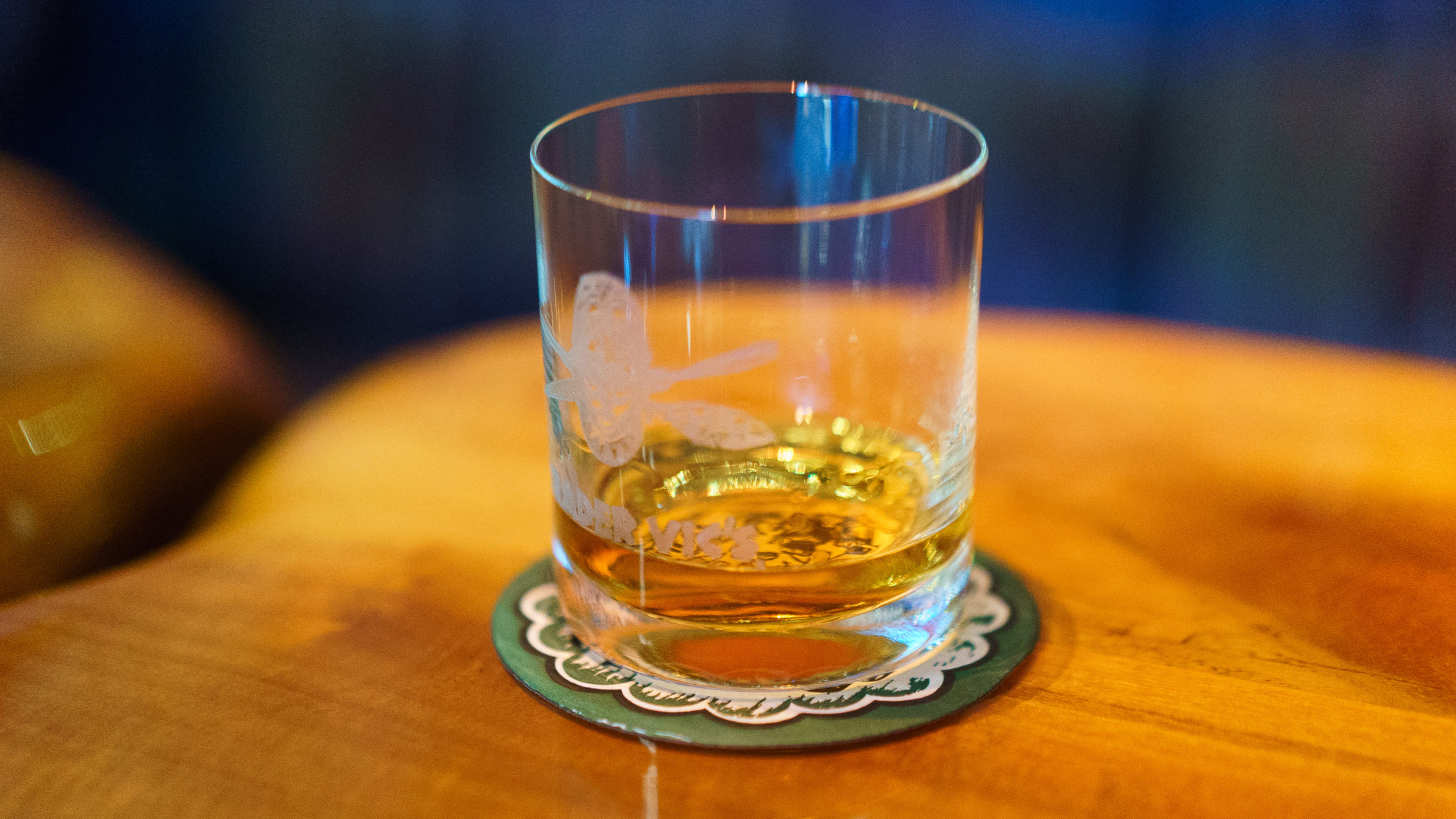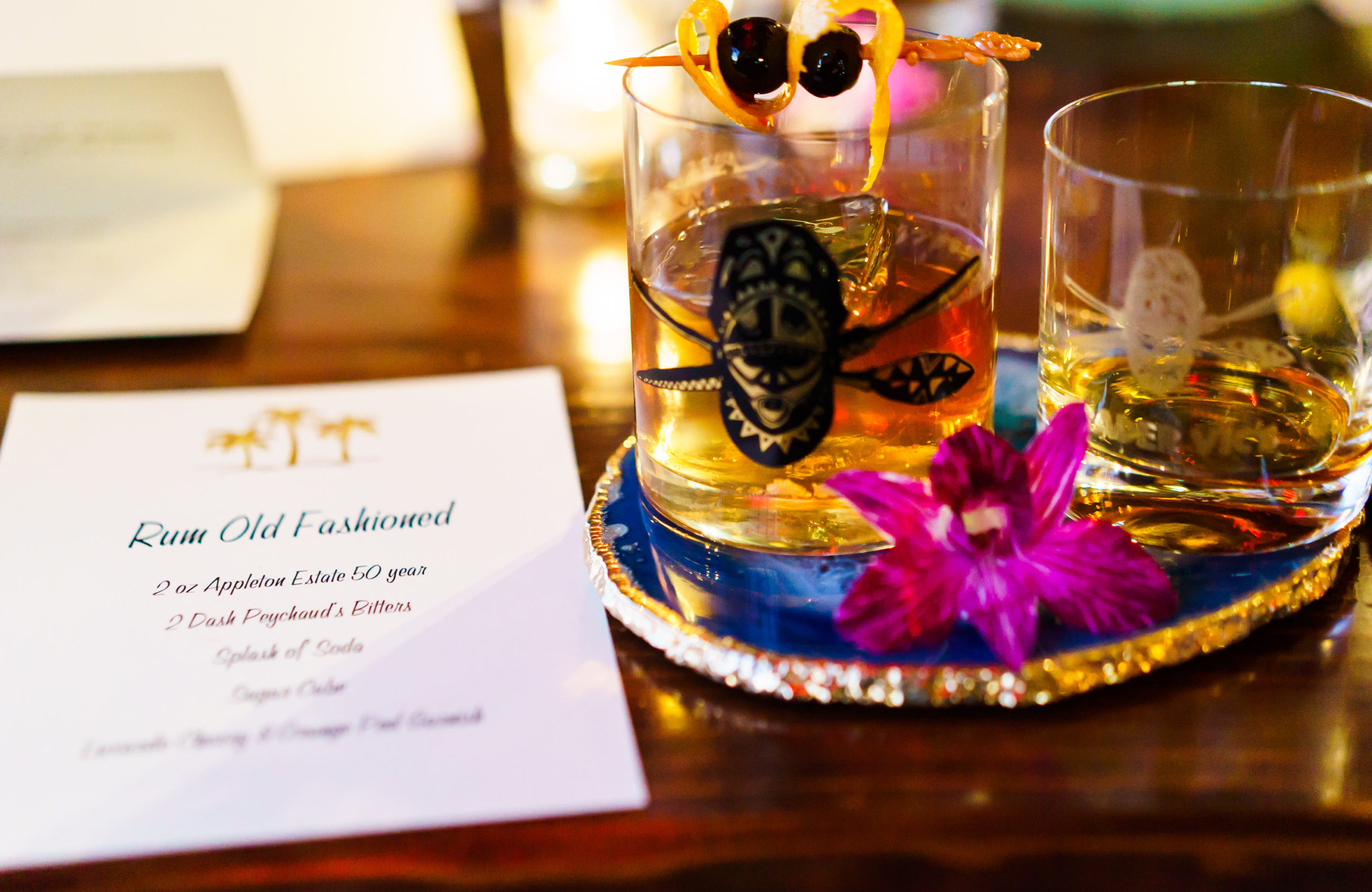We humans have shockingly malleable tastes. Studies have shown that we are more likely to prefer something if we think it’s expensive (even if it isn’t). It stands to reason, then, that a cocktail costing $1,611 should be roughly 80 times more delicious to me than any I’ve ever purchased for myself. So, when Trader Vic’s asked if I wanted to try their extremely limited-edition tipple, of course I jumped at the chance. Verdict?
It was tasty! But the best drink I’ve ever had, it was not. Not even with my stupid human fallibility.
The cocktail in question is a special version of Trader Vic’s Rum Old Fashioned. No, it doesn’t contain caviar from an endangered fish or platinum-encrusted ice. The reason this drink costs more than the U.S. median rent is that it contains Appleton Estate 50-Year-Old Rum, i.e. the oldest rum available for sale in the world, or so it is believed.

Appleton 12-year, neat.
But let’s back up and talk about the rum itself. Appleton is, technically speaking, good shit. Even the 12-year, which can be had for about 40 bucks a bottle, is good shit. Before this tasting, I decided to order myself a glass of the 21-year (about $200 a bottle), so I’d have a reference point. The 21-year is really, really good shit. It’s well-balanced, has extremely strong vanilla notes, and it goes down very smoothly, with a bit of an oily mouthfeel. So, needless to say, I was extremely excited to try the 50.
But here’s the thing: Older doesn’t always mean better when it comes to booze, and that’s especially true of things that are ageing in a barrel. Bottle ageing allows a spirit (or wine) to mellow and oxidize a little bit, but barrel ageing radically changes the flavours. Oak barrels impart a delightful flavour on booze, especially in the first few years of ageing. That’s doubly true if the barrels are charred. Charring the wood causes the sugars within it to caramelize, which is what gives bourbon its signature sweetness and some of its colour.
In the case of Appleton, the ageing is done in once-used bourbon barrels. This is what gives the rum a darker colour and some of its characteristic bourbony flavour (which also makes it nicely suited for an old fashioned). The rum seeps in, pulling out those remaining caramelised sugars and the traces of bourbon. The thing is, those flavours are concentrated on the outermost portion of the wood (facing the inside of the barrel), and most of those sugars are absorbed by the alcohol within the first few years. After that, things start tasting more and more like, well, wood. This can give your booze a tannic flavour, which can easily crowd out the sweetness. In extreme cases, those tannins can make it feel like you ate an under-ripe banana.
There are environmental factors to consider, too. The ambient temperature of the barrel house is a critical factor in how rapidly the barrel will age. Humidity will play a factor, too, because the more humid the air the better it is a transferring heat. In a colder place like Scotland that means that booze ages very slowly, which is why longer ageing periods are common for the Scotch whisky there. Jamaica, where Appleton is made and aged, in contrast, is hot and humid pretty much all year round. The increased temperature makes the liquor more volatile, which in turn allows it to interact more with the wood and penetrate deeper. That also means that more of the spirit is lost, resulting in even more concentrated flavours. A spokesman for Appleton told me that due to the constant heat in Jamaica, a spirit in a barrel “ages about 3X faster than in the US and Europe.” That sounds a bit extreme to me. I mean, that would mean I drank the equivalent of a 150 year old rum. Which would be awesome if true.

So, what does that mean for the Appleton 50? I was able to try it neat first, and it’s pretty damn woody. It definitely wasn’t in green banana territory, but it’s significantly less sweet than the 21-year. It’s also darker. Vanilla notes are still there, but they’re much less prominent. It comes in at 90 proof (as opposed to 86 for the 21-year), but it tastes drier than that partially due to the increased tannins. It had lost a bit of the smoothness from the 21-year. It had gained a bit of complexity, like it had accrued a few more layers.
Then I tried it in the Rum Old Fashioned, which is very likely to be the most expensive thing I will ever drink in my life. It was… pretty good? I fully admit that I had high expectations (who wouldn’t?), but I found myself a bit underwhelmed. The rum definitely benefitted from a little dilution, as it gave those layers a little separation and I could taste it better, but I don’t love Vic’s old fashioned recipe. For starters, it used a sugar cube instead of simple syrup, which I think is a mistake. Sugar sits at the bottom of the glass unless it’s perfectly stirred in (which it never is), which makes the drink uneven: Not sweet enough at the beginning, and too sweet at the end. It used Peychaud’s bitters instead of Angostura, which I think is a little iffy because Peychaud’s imparts of bit more of an anise flavour/aroma. But the biggest sin: a splash of soda. C’mon! I mean, I appreciate that you’re not muddling fruit in there like some kind of serial killer, but still, soda? Why would you add something acidic to a party that’s all about minute subtleties?
Like I said, it was good, but ask for it neat with a little water on the side. Add a few drops of the water to open it up, but honestly, I think adding any other flavours is a mistake. If you’re down to pay the $1,611 asking price I’m sure the barkeep will accommodate you. At least I hope so.
Ultimately, was the 50-year better than the 21-year? Honestly, it’s close. Maybe a little? Yeah, it was probably a bit better. But was it eight times better, as the price would indicate? No. Definitely not. That being said, it was still fun to drink something that’s old enough to be my dad.
